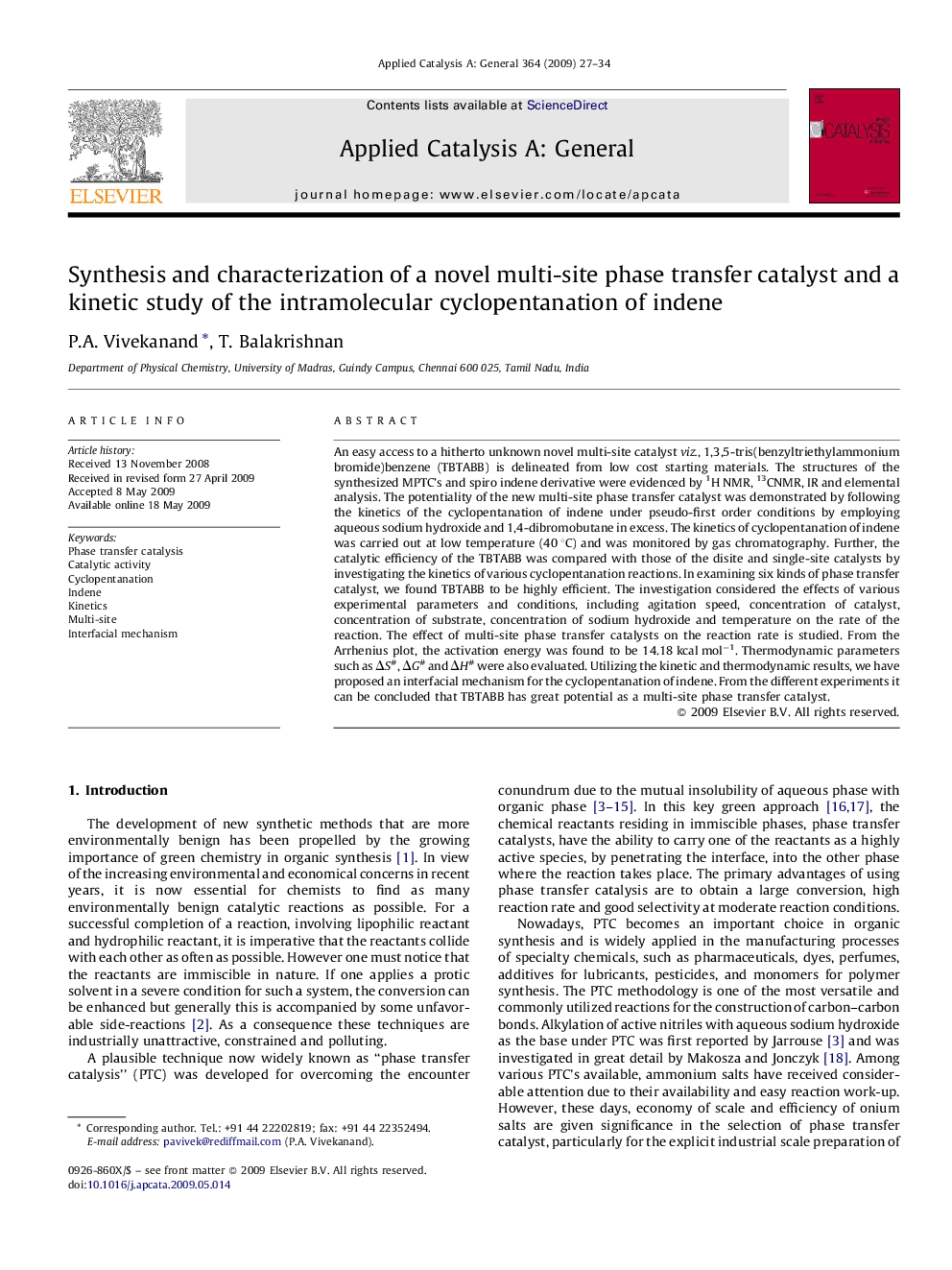| Article ID | Journal | Published Year | Pages | File Type |
|---|---|---|---|---|
| 42858 | Applied Catalysis A: General | 2009 | 8 Pages |
An easy access to a hitherto unknown novel multi-site catalyst viz., 1,3,5-tris(benzyltriethylammonium bromide)benzene (TBTABB) is delineated from low cost starting materials. The structures of the synthesized MPTC's and spiro indene derivative were evidenced by 1H NMR, 13CNMR, IR and elemental analysis. The potentiality of the new multi-site phase transfer catalyst was demonstrated by following the kinetics of the cyclopentanation of indene under pseudo-first order conditions by employing aqueous sodium hydroxide and 1,4-dibromobutane in excess. The kinetics of cyclopentanation of indene was carried out at low temperature (40 °C) and was monitored by gas chromatography. Further, the catalytic efficiency of the TBTABB was compared with those of the disite and single-site catalysts by investigating the kinetics of various cyclopentanation reactions. In examining six kinds of phase transfer catalyst, we found TBTABB to be highly efficient. The investigation considered the effects of various experimental parameters and conditions, including agitation speed, concentration of catalyst, concentration of substrate, concentration of sodium hydroxide and temperature on the rate of the reaction. The effect of multi-site phase transfer catalysts on the reaction rate is studied. From the Arrhenius plot, the activation energy was found to be 14.18 kcal mol−1. Thermodynamic parameters such as ΔS#, ΔG# and ΔH# were also evaluated. Utilizing the kinetic and thermodynamic results, we have proposed an interfacial mechanism for the cyclopentanation of indene. From the different experiments it can be concluded that TBTABB has great potential as a multi-site phase transfer catalyst.
Graphical abstractAn easy access to a hitherto unknown novel multi-site catalyst viz., 1,3,5-tris(benzyltriethylammonium bromide)benzene (TBTABB) is delineated from low cost starting materials. The potentiality of the new multi-site phase transfer catalyst was demonstrated by following the kinetics of the cyclopentanation of active methylene compounds under identical conditions. Based on the experimental results, a suitable mechanism is proposed.Figure optionsDownload full-size imageDownload as PowerPoint slide
